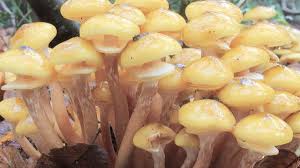Mycologists have studied how the black honey fungus (Armillaria ostoyae), a well-known parasitic fungus, survives. It is reported by “Hi-tech”. It weighs over 35,000 tons
A team of researchers from the University of Utah studied the defense mechanism of the arboreal fungus Armillaria ostoyae to figure out how to eradicate it. Their results are published in the Journal of the Mechanical Behavior of Biomedical Materials.
Armillaria ostoyae is a parasitic fungus with long black tentacles that spread and attack vegetation. Its cord-like structures, rhizomorphs, seek and attack trees, sucking out nutrients from them. These fungi are known to infect and kill over 600 species of woody plants, posing a serious threat to forests and agriculture. From 2000 to 2002, only one infection resulted in $ 1.5 million in damage: it destroyed peach trees in Georgia, USA. Until now, little was known about why Armillaria ostoyae is so difficult to kill.
For the study, scientists took samples of the largest mushroom in the world, which is located in the Mahler National Forest in Eastern Oregon, USA. The mycelium is over 90 km² and weighs 35,000 tons. Known as the Humongous Fungus, this specimen is arguably the largest living organism on Earth, according to a press release from the University of Utah.
Research has shown that black rhizomorphs use special enzymes and pressure to penetrate the roots and under the bark of trees. Once inside the tree, they leave a mycelial fan, white branching threads that coat the inside of the bark like paint, depriving the tree of water and nutrients. Also, rhizomorphs have an outer melanized layer that protects the antennae from chemicals and mechanical forces. The researchers also learned that they contain calcium, which protects the fungus from insect attacks and the chemicals they release.









